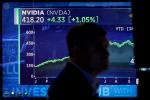One tool that many traders and a majority of investors do not include in their investment or trading decisions is Fibonacci analysis. Though some have not been exposed to this type of analysis, many others dismiss it when they find that it is based on the work of a 12th century mathematician or because they think it is too complex. Leonardo Pisano, nicknamed Fibonacci, was an Italian mathematician born in Pisa in the year 1170.
From a trading perspective, there are many basic and advanced ways that Fibonacci numbers can be beneficial to the trader. Suffice it to say that this series of numbers and the relationship of one number to another in the series have been found throughout nature. The most notable relationship can be found by dividing one Fibonacci number by the next one in the series, which will give you the “Golden Ratio” of 0.618.
There are two primary ways to use Fibonacci analysis in trading. One is to identify or confirm support or resistance levels, and the other is to help identify price targets. Often times, a trader will look at a market and realize that when they were not paying attention, a significant level of support or resistance was broken and the market has already moved significantly. Fibonacci analysis can be very helpful in this situation.
If you ask any technical trader which charting tool they rely on the most, Fibonacci retracement would probably come fairly high up on the list. This method is used by many types of market participants, from individual technical traders through to analysts at the world’s largest financial institutions such as Citigroup.
Fibonacci Fan lines are trend lines based on Fibonacci retracement points. Rising fan lines extend up from a trough and pass through retracement based on the advance. These fan lines can then be used to estimate support levels or potential reversal zones. Falling fan lines extend down from a peak and pass through retracements based on the decline. These fan lines can then be used to estimate resistance levels or potential reversal zones.
Class 2 – This class will emphasize the use of retracement levels for support and resistance and the addition of Fibonacci fans to predict future price levels. Fibonacci Fans use Fibonacci ratios based on time and price to construct support and resistance trendlines; also, Fibonacci Fans are used to measure the speed of a trend's movement, higher or lower. Fibonacci Fans, otherwise known as Fibonacci Projections, share some kind of similarity to Gann Lines and Angles.
Fans displayed on the charts by following the same principles of drawing the Fibonacci retracement points: drawing a trendline from one price extreme to another, either from a peak to a trough, or from a trough to a peak. The trace also produces a vertical line through the second price extreme level. Three trendlines then fan out from the first price extreme point, passing through the vertical line at the 23.6 %, 38.2 %, 50.0 %, 61.8 %, 76.4%, or 100% Fibonacci levels.
Barry Norman The Director of Investors Trading Academy as well as a published author and educator. Barry brings with him over 35 years of financial market knowledge and experience. He holds an MBA in Finance and Economics from UCLA and an undergraduate degree in Economics from the University of Maryland. Barry was award the title of “Best Education in Europe” by Global Banking & Finance. Barry is also a presenter for the MoneyShow and many well-known news sources.


